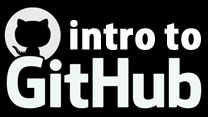Version control is a system that records changes to a file or set of files over time so that you can recall specific versions later.
If you are a web designer or developer and want to keep every version of an image, file or resource, it is very wise to use a Version Control System (VCS). A VCS allows you to: revert files back to a previous state, revert the entire project back to a previous state, review changes made over time, see who last modified something that might be causing a problem, who introduced an issue and when, and more.
Using a VCS also means that if you screw things up or lose files, you can generally recover easily. In addition, you get all this for very little overhead.
Although there are dozens of version control systems on the market, some of the world's most renowned projects (like the Linux Kernel, Ruby on Rails, or jQuery) are using Git as their VCS of choice.
In this class, we will review the steps of installing Git (Mac or Windows), understand basic file command-line syntax, review the workflow of version control in general, setup of the Git software, create repository to store our sample web project, work through real-world scenarios in using Git and GitHub in a team environment.
Note: We will be using the commands-line interface (Mac or Windows) solely to properly learn and understand underlying concepts.
Objectives for this class:
- Review of version control and its usages.
- Why would you want to use a version control system (VCS)?
- Overview of Git and its workflow.
- Command-line vs GUI tools.
- Installation of software on Windows and Mac.
- Basic file command-line syntax
- Setting up a online GitHub
- Creating an updating a repository
- Git administration tasks: logging, committing, branching, and merging files
- Project management with Git and GutHub
Applicable Job Roles: web designer, web developer, webmaster, web application developers
















